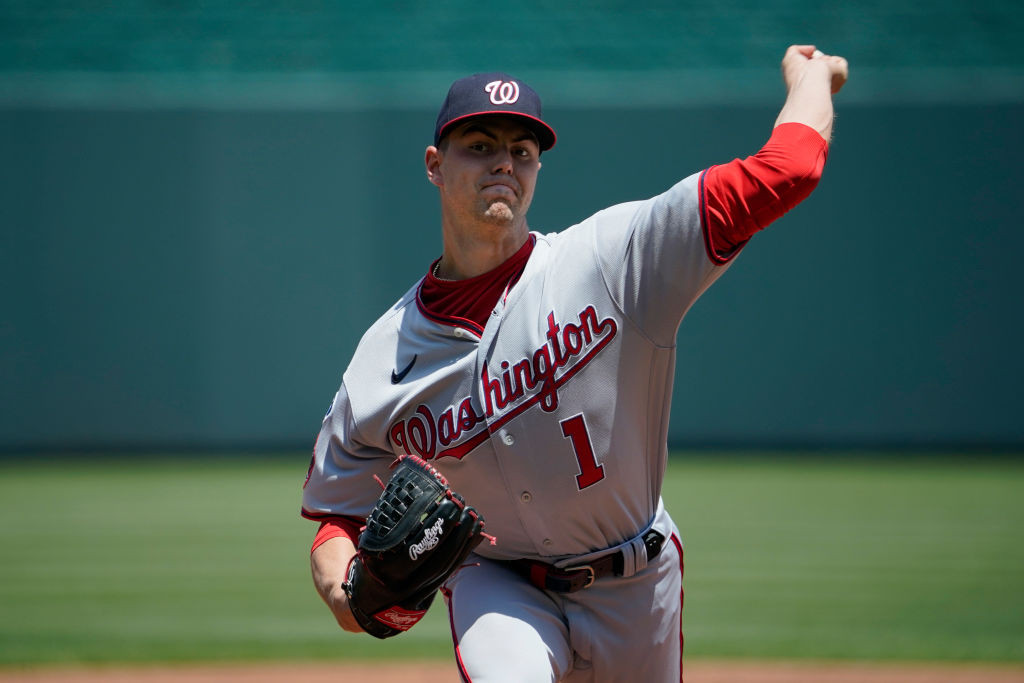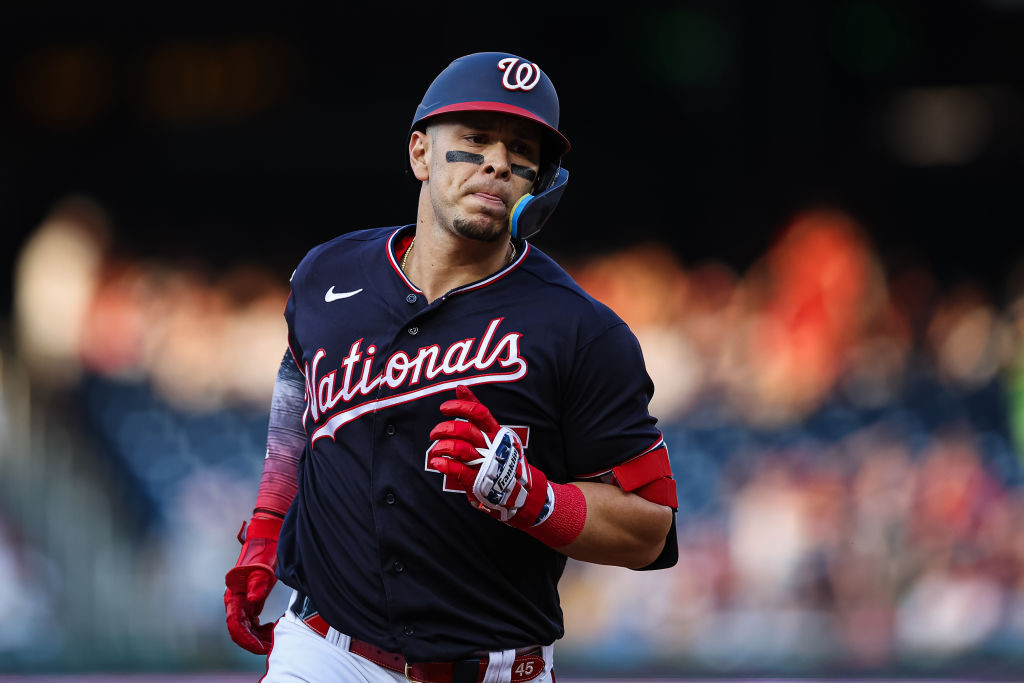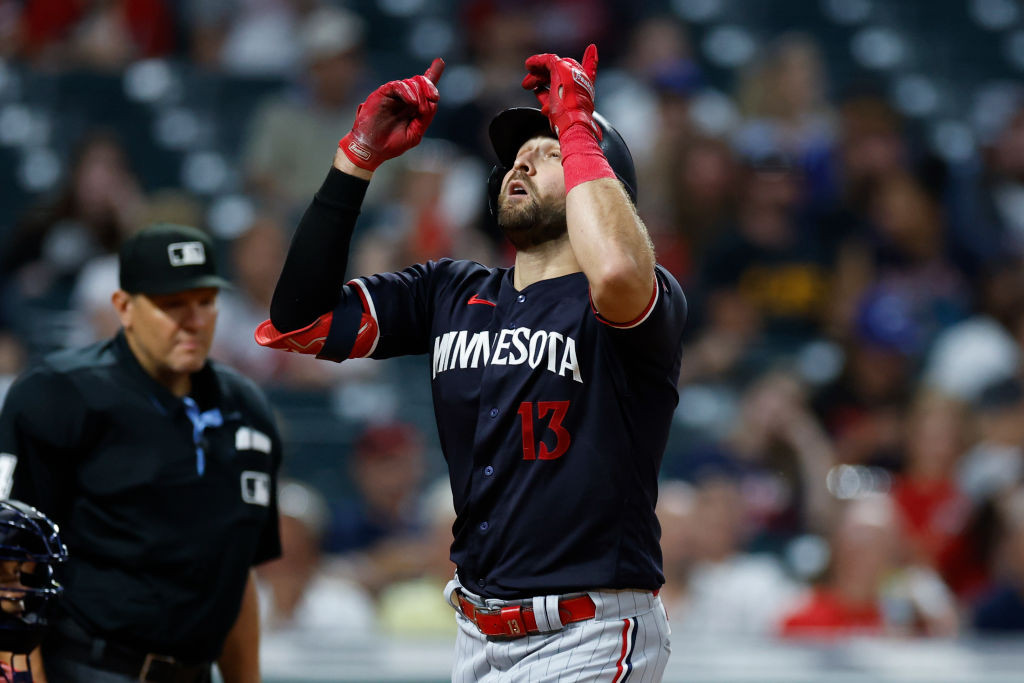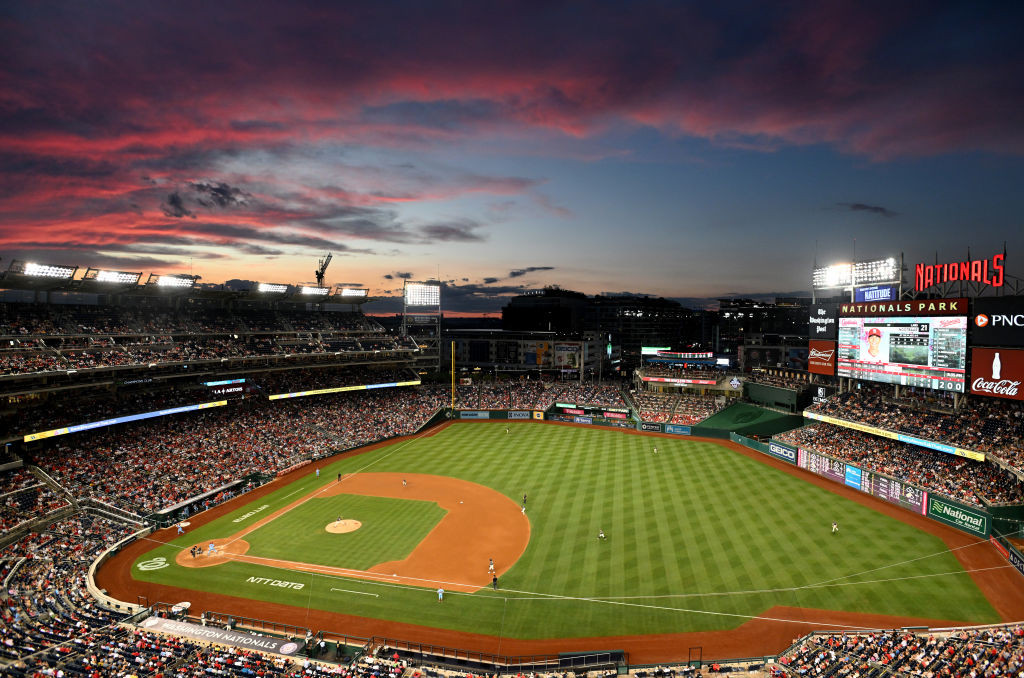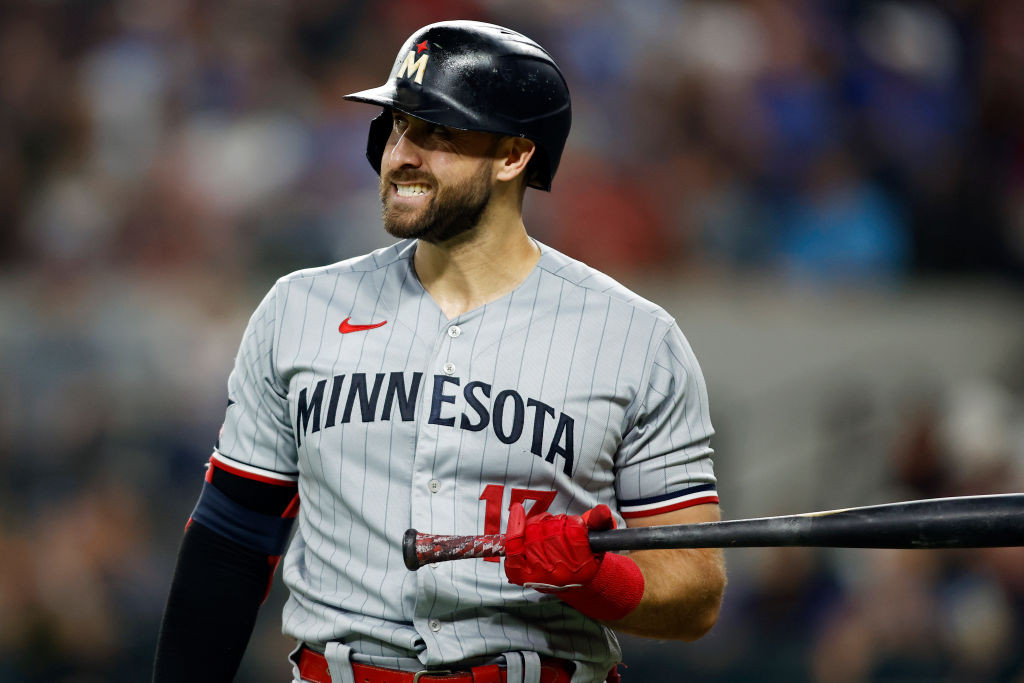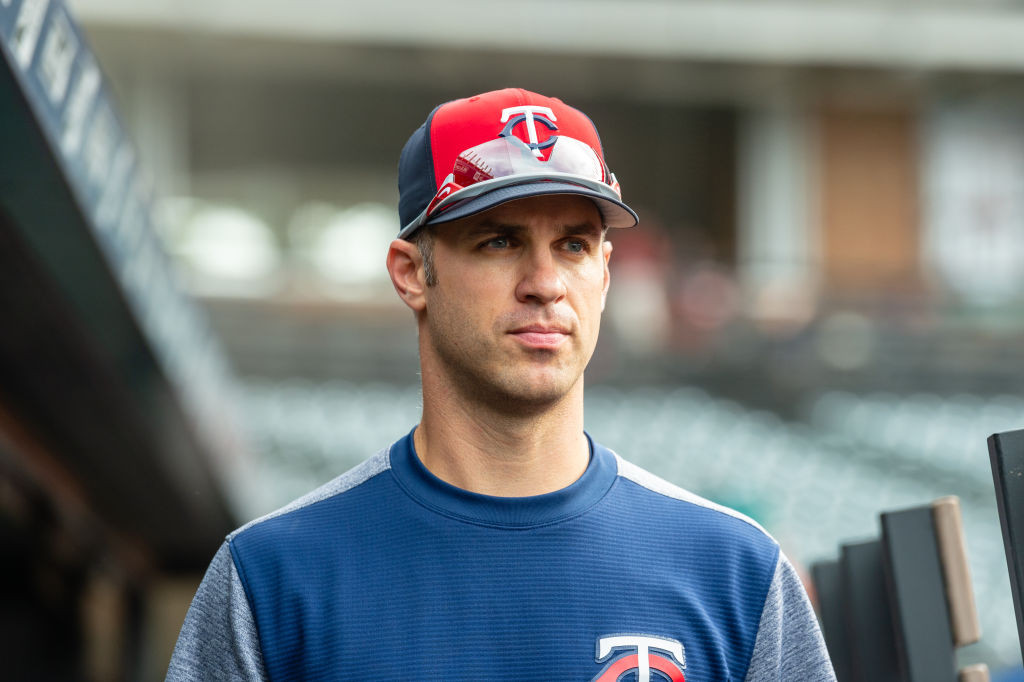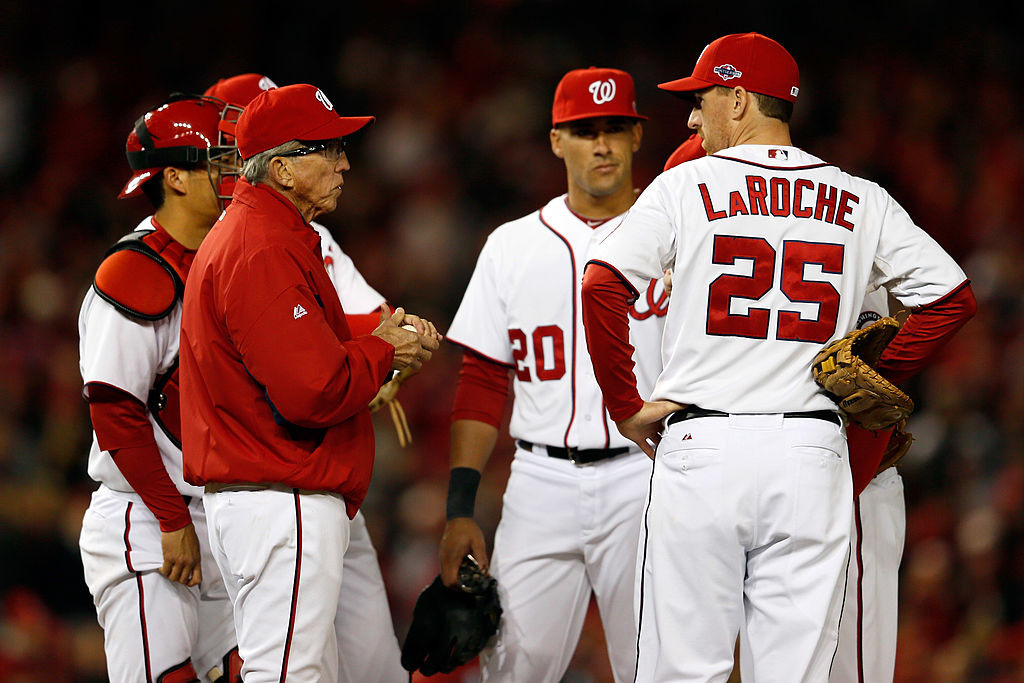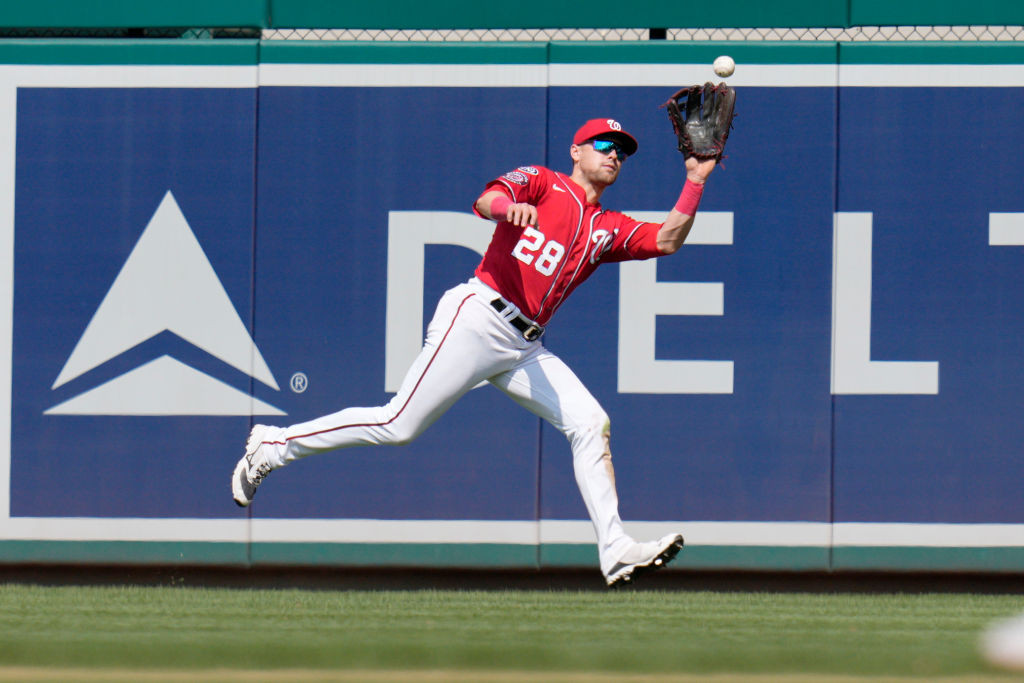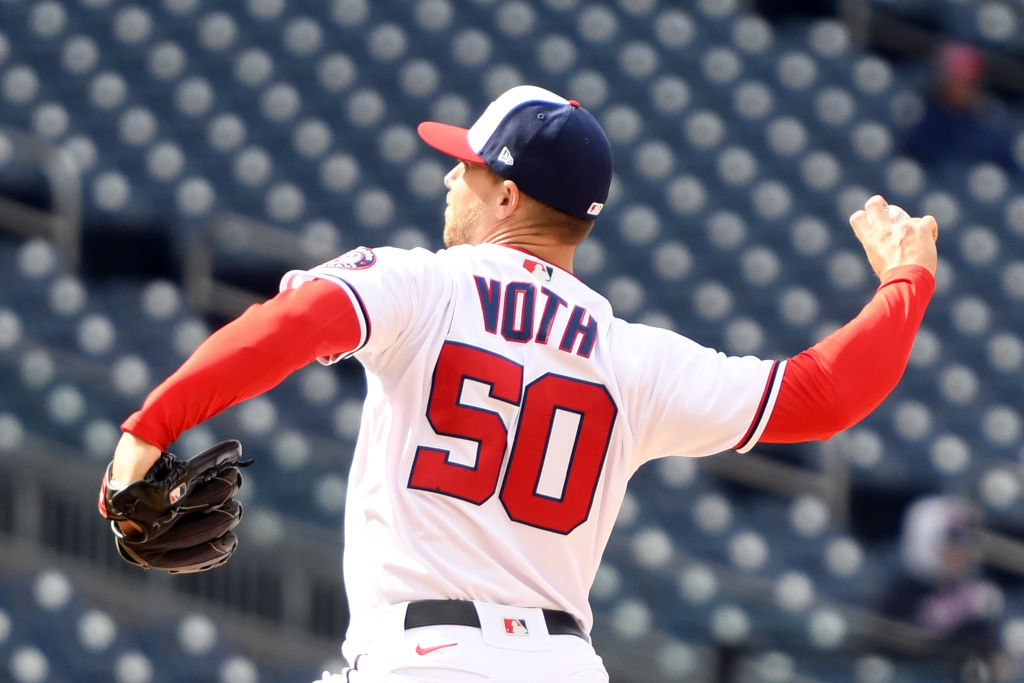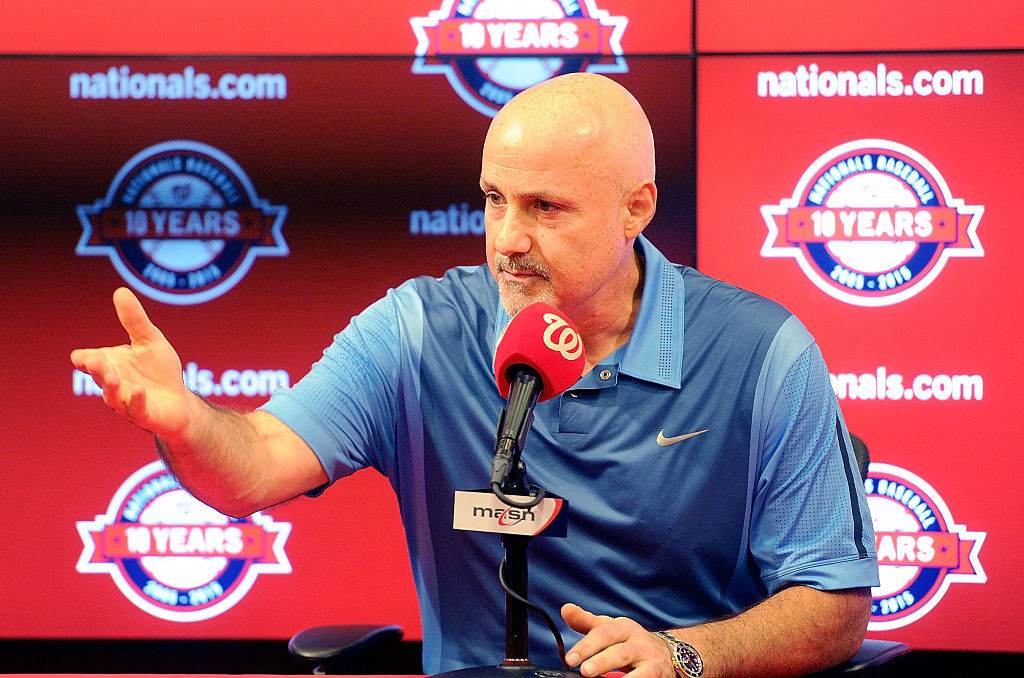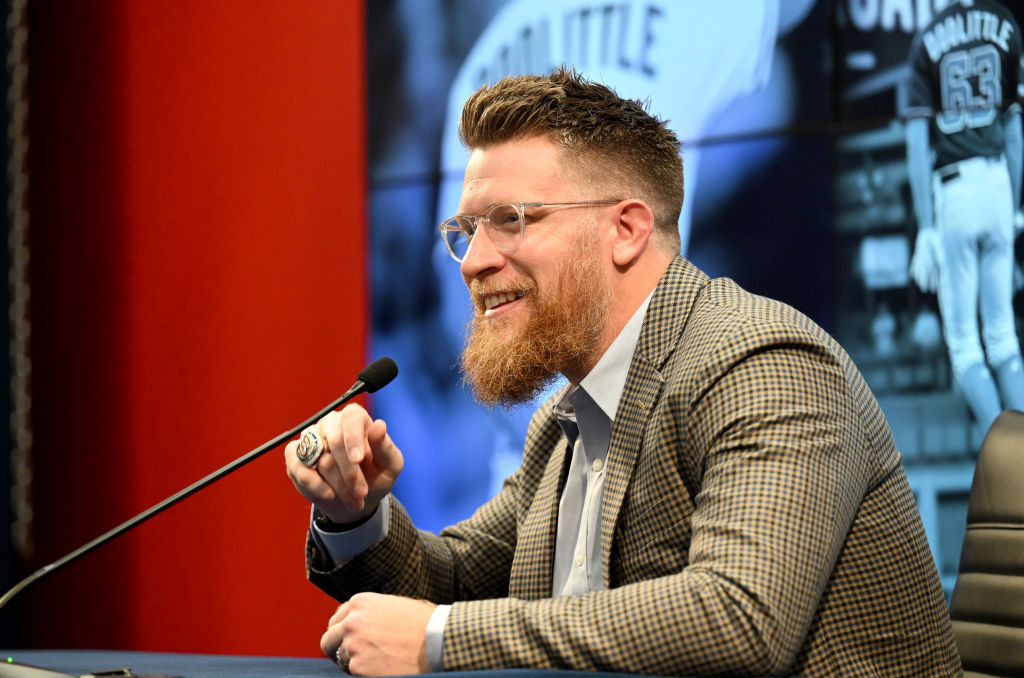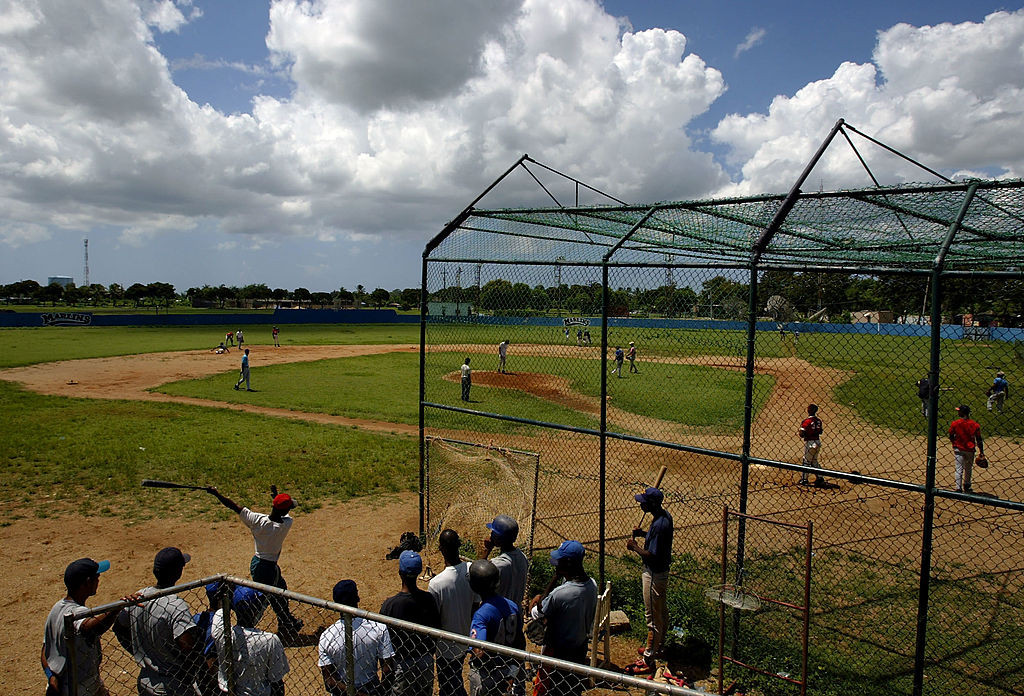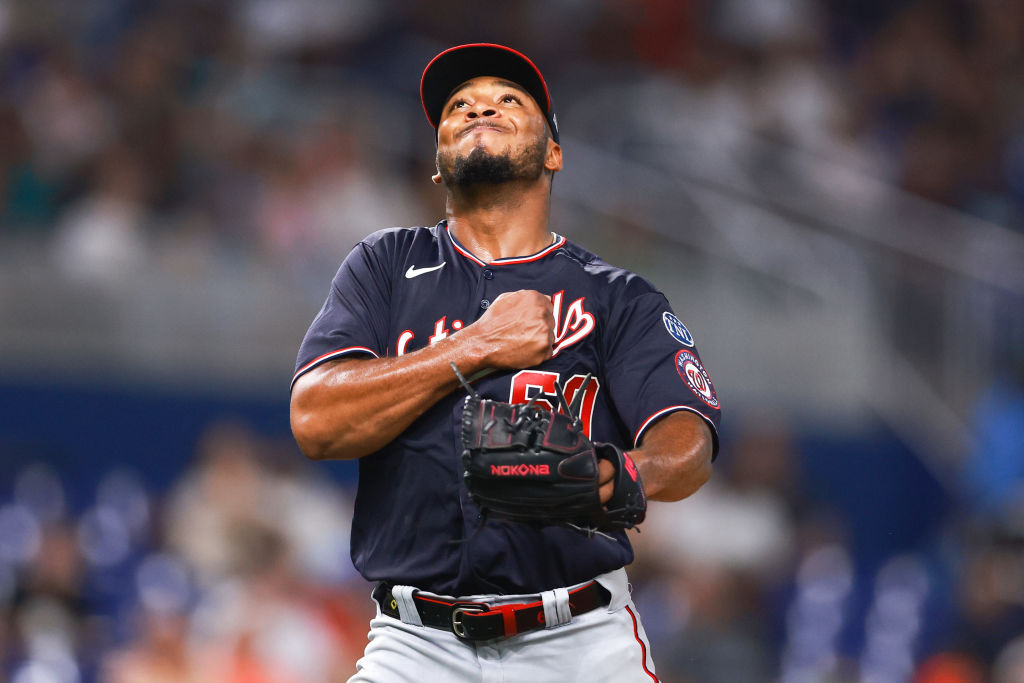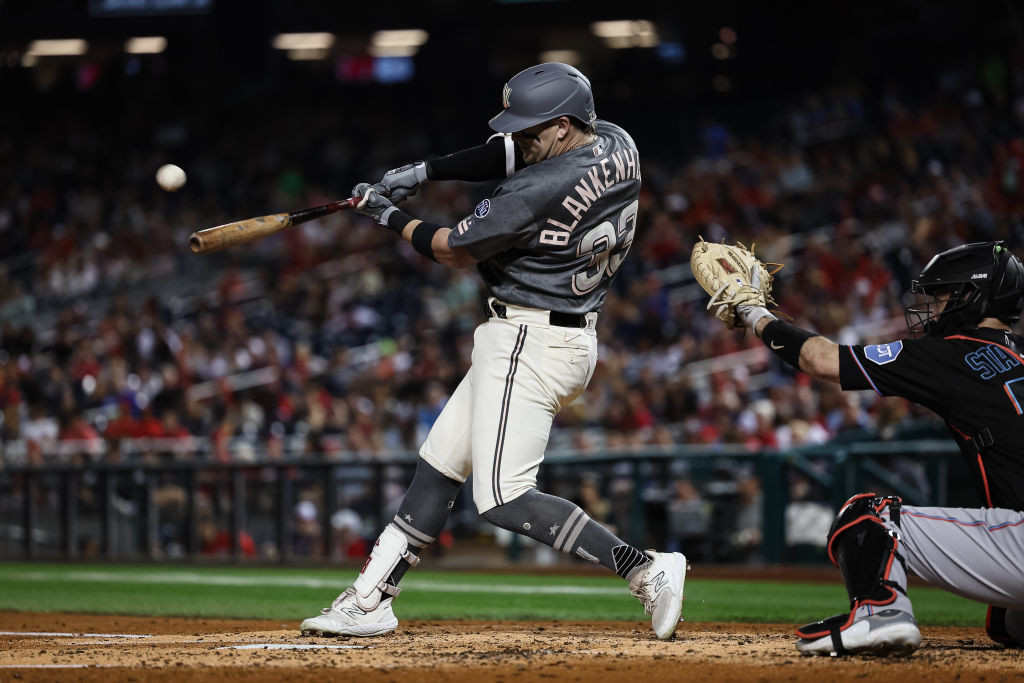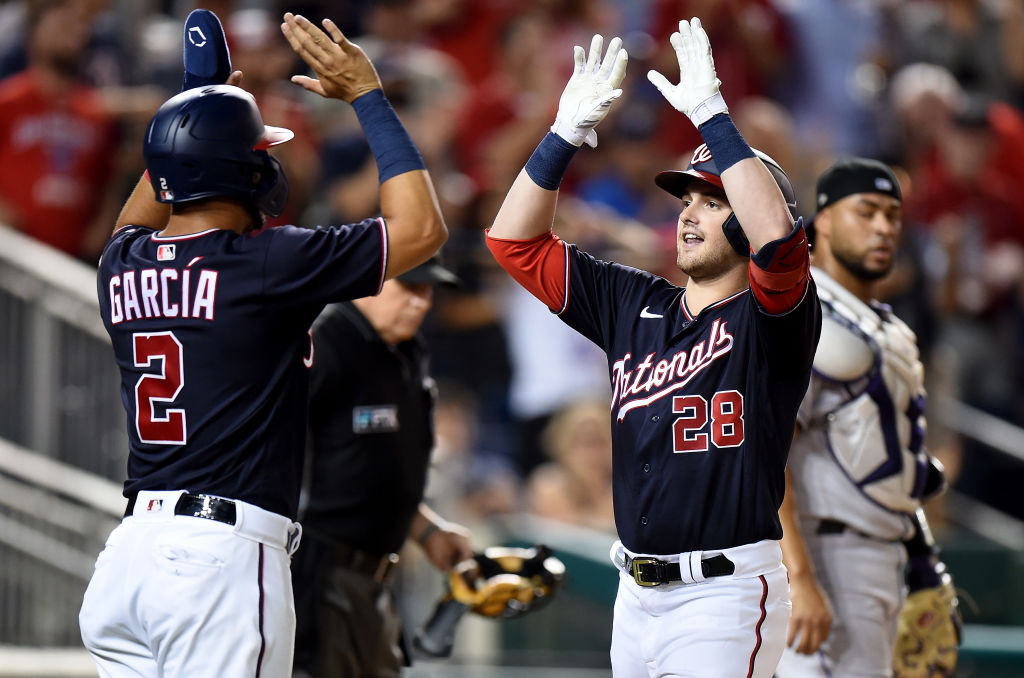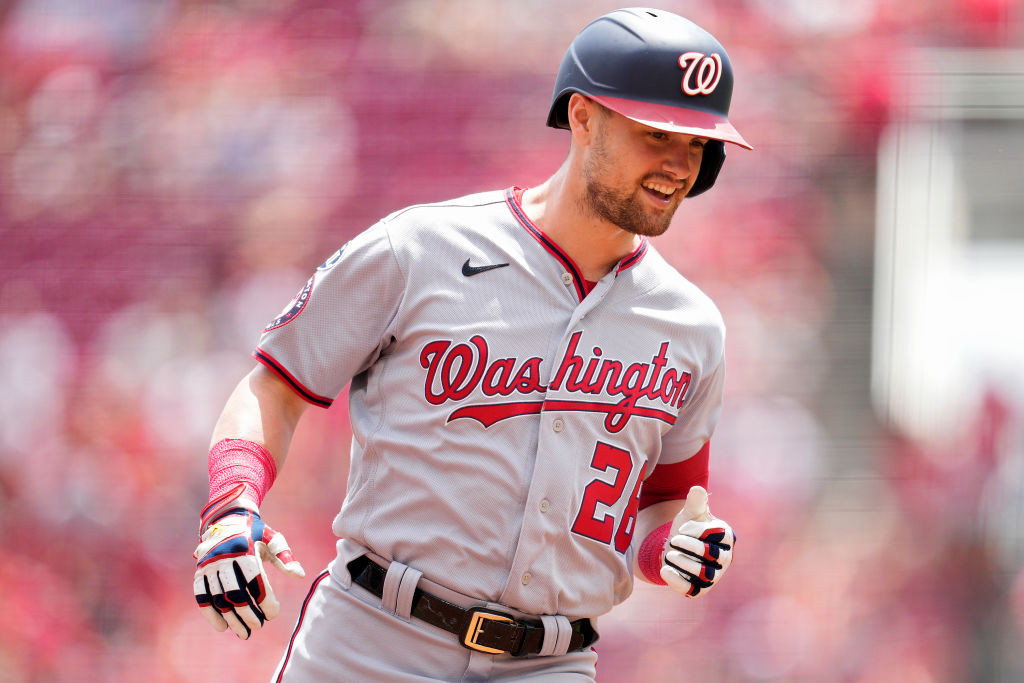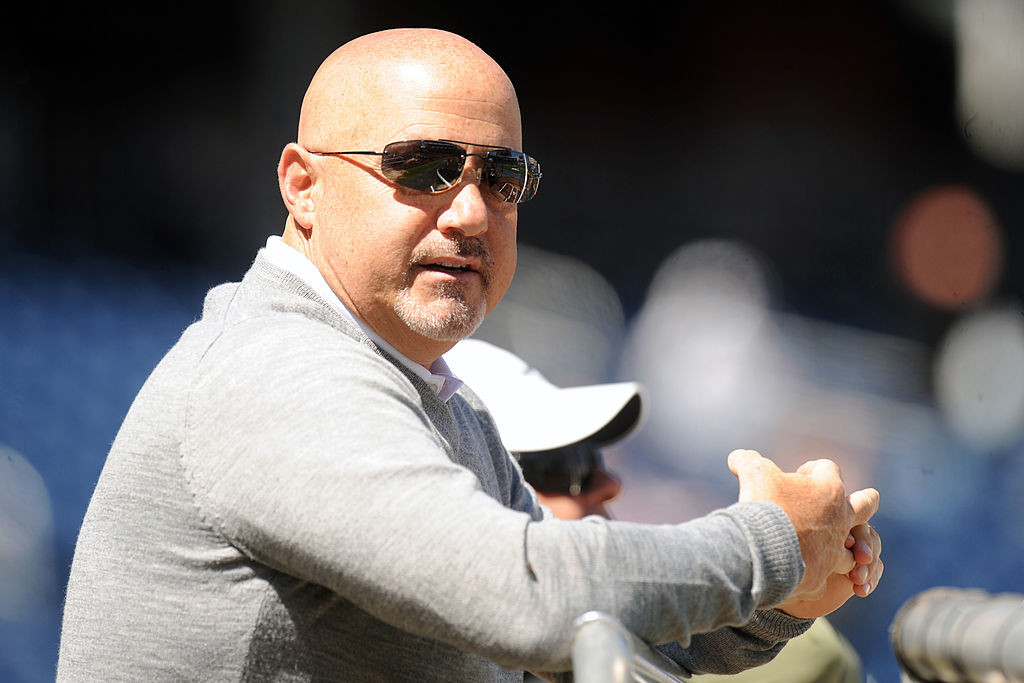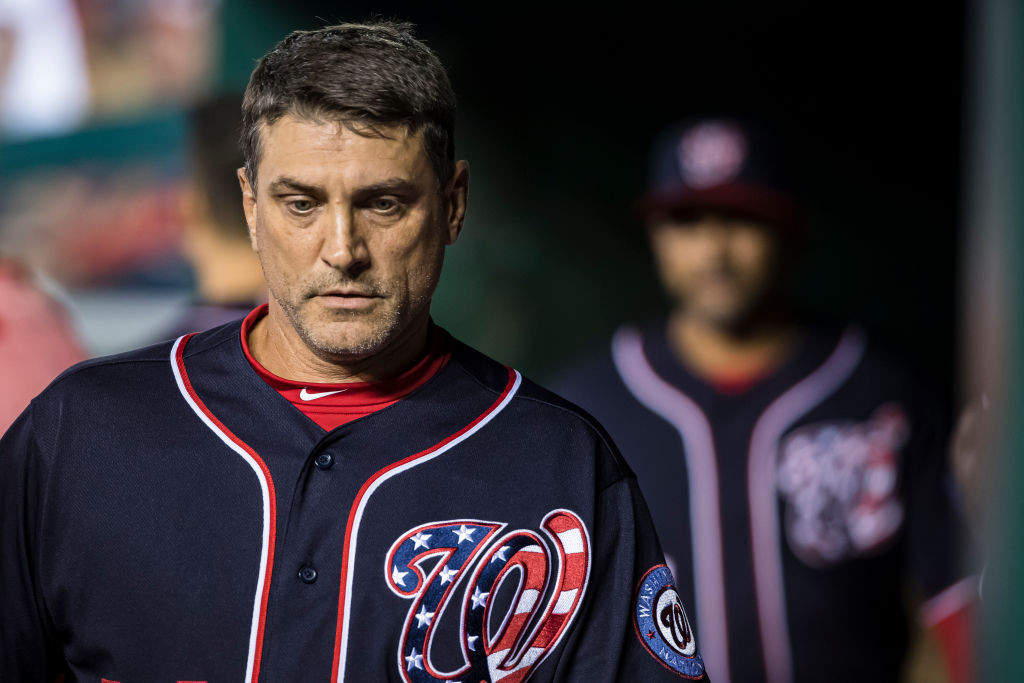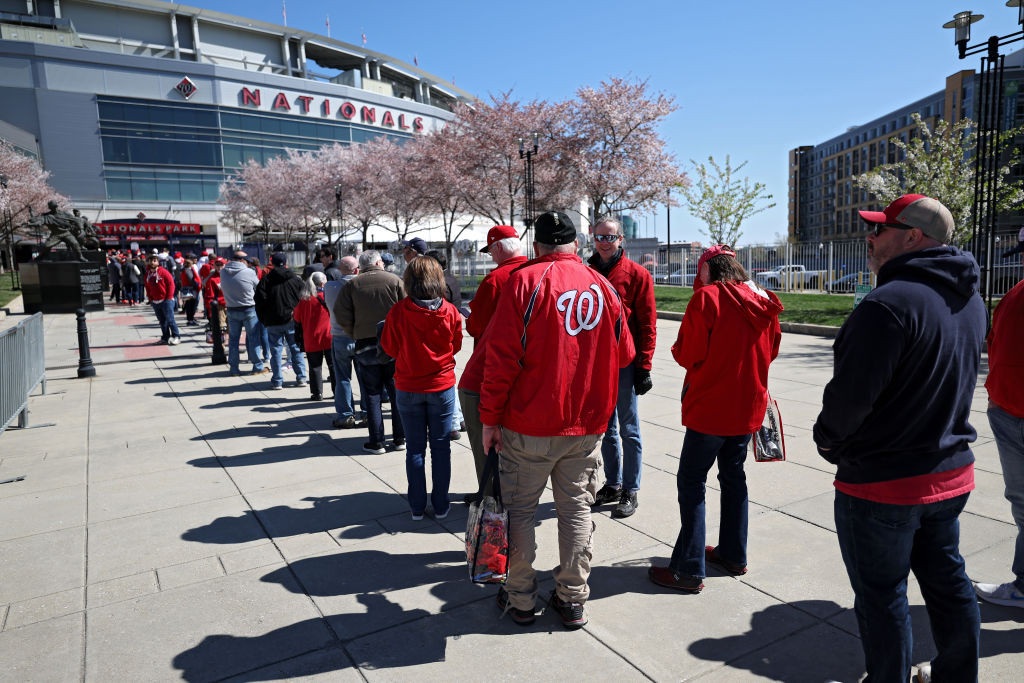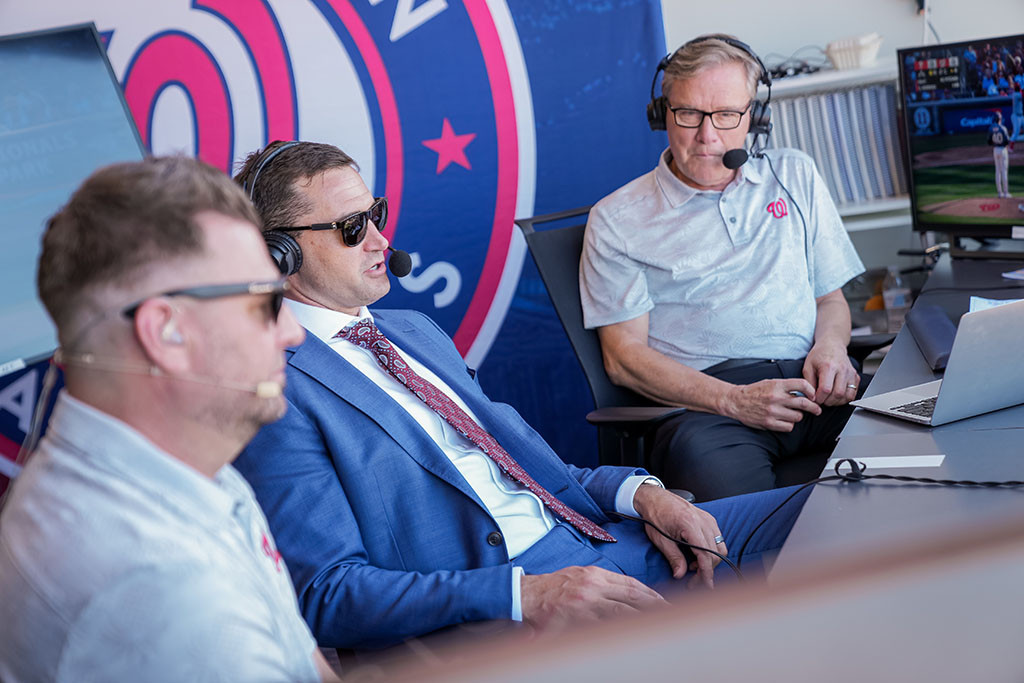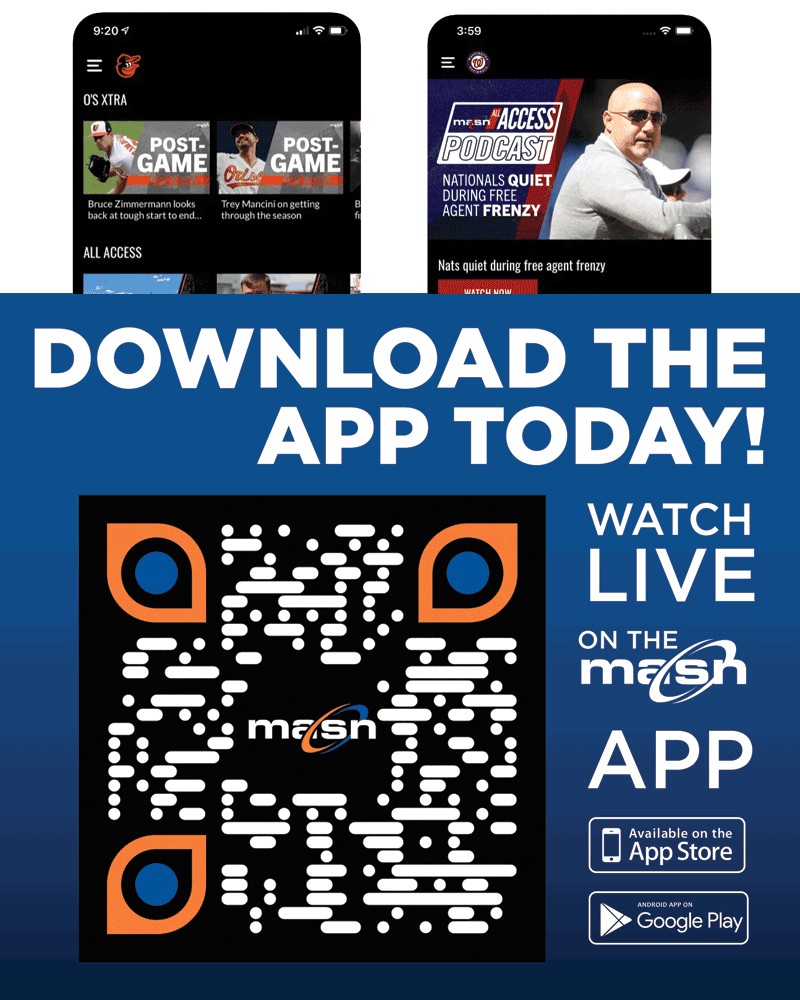We’re not quite there yet, but spring training is drawing near. Pitchers and catchers report to West Palm Beach in a mere 19 days, and at long last the 2024 Nationals will begin to take shape.
There will be more optimism surrounding this year’s team than there was a year ago, with the organization hoping to take another step forward after improving from 55 to 71 wins. But how much better should we believe the Nats actually are?
Nobody’s going to try to claim this roster stacks up with the best rosters in the National League. The key question is: How does it stack up to last season’s roster?
Over the next few days, we’ll attempt to answer that question, position by position. We’ll start today with the pitching staff. So, do the 2024 Nationals look better, worse or the same?
NO. 1 STARTER: Slightly better
Though Patrick Corbin started Opening Day yet again, by season’s end it was clear Josiah Gray was the team’s best starter. Not that Gray resembled a true ace, far from it. He finished 8-13 with 3.91 ERA and 1.459 WHIP. But he cut down dramatically on his home run rate from the previous year and increased his strikeout rate. He also showed an ability to finish strong after a rough stretch during the second half. What can we expect from the 26-year-old this season? More progress should be expected. Gray is learning who he is and who he isn’t as a big-league pitcher. He set out to reduce his homer rate last winter and was successful. If he can be successful reducing his walk rate in 2024, he’ll wind up having a better season.
The Nationals’ acquisition of Joey Gallo this week – which still won’t be official for another day or two, by the way – was made with one primary purpose in mind: To inject some power into a lineup that sorely needs it.
The Nats ranked last in the National League with 151 home runs last season. And they had only one individual player top 18 homers: Lane Thomas, who finished with 28.
Gallo, for those who don’t know, has averaged 30 homers in each of his last six full major-league seasons and hit 38 as recently as 2021 with the Rangers and Yankees. He hit only 21 last year with the Twins, but he did that in only 332 plate appearances. His 6.3 percent home run rate was actually right in line with his career average, not to mention more than double the major-league average.
So, Gallo’s presence is going to help the Nationals. But he alone isn’t going to turn the league’s worst power-hitting lineup into even an average one. For that, the Nats will need blasts from others.
There’s still a reasonable chance Mike Rizzo adds another bat this winter, because at the moment the team’s Opening Day designated hitter appears to be … Riley Adams? Jake Alu? Stone Garrett (if he’s healthy)? The options aren’t great, so it wouldn’t be surprising if Rizzo spends a bit more money on another hitter with power potential.
If you missed the news Tuesday, the Nationals actually acquired a major leaguer.
Yes, for the first time in 42 days, they made a move involving the 40-man roster. (OK, actually the move isn’t official yet and may not be for another few days, so the streak technically continues.)
Joey Gallo is going to be a National, the 30-year-old slugger having agreed to terms on a one-year deal that guarantees $5 million, plus the potential for another $1 million earned in incentives, sources familiar with the negotiation confirmed. He’ll need to pass a physical, and the team will need to clear a 40-man spot for him, but then it’ll all be official, and our long winter nightmare will be over.
The Nats hadn’t made a major-league transaction since Dec. 12, when they officially announced the signings of Nick Senzel and Dylan Floro. Suffice it to say, it has been a while.
If you were hoping for a deal to get excited about, this probably wasn’t it. There were bigger names available on the free agent market, many of them coming with a much higher price tag. But don’t blow off the Gallo signing altogether. There is some logic behind it.
Nearly every Hall of Fame election I’ve participated in sadly has been dominated by the issue that plagued baseball for an entire generation: performance-enhancing drugs. With so many great players tainted by PED connections, most of the toughest calls I had to make in my previous 13 Baseball Writers' Association of America ballots required me to invoke the Hall’s longstanding off-the-field criteria, which instruct voters to consider character, integrity and sportsmanship in addition to playing performance.
The good news: There were still a few lingering PED cases on the 2024 ballot, but not many. And all of them concerned players who have been on this ballot for many years, so there wasn’t a whole lot of new research that needed to be considered.
That did not, however, make the 2024 ballot easy. Quite the opposite, because for the first time in a long time, there were a number of really difficult decisions to be made strictly on a player’s on-field performance. Which, to be honest, is how it should be. This is supposed to be the ultimate baseball debate: Is Player X a Hall of Famer or not? And it’s such a better debate when the question involves on-field performance and only on-field performance.
This was actually a smaller ballot than has been typical since I started doing this: Only 26 players up for election, 12 of those first-time nominees who retired five years ago, the other 14 returning candidates who continued to receive at least 5 percent support for up to 10 years of eligibility. As always, a player must be named on 75 percent of the roughly 400 ballots sent out to writers who have been active members of the BBWAA at least 10 years to earn induction into Cooperstown.
And it was refreshing to learn tonight that three players crossed the magic threshold and earned induction: Adrián Beltré, Joe Mauer and Todd Helton. Those three all-time greats will join Jim Leyland, who was elected last month by the Contemporary Era Committee, on the stage in Cooperstown this summer.
A Nationals club desperate for some left-handed power is addressing that need with a notable, if flawed, addition: Joey Gallo.
Gallo and the Nats have agreed to terms on a one-year contract worth a guaranteed $5 million, plus another $1 million in incentives, sources familiar with the deal confirmed. The 30-year-old outfielder/first baseman must still pass a physical, and the team must clear a spot on the 40-man roster before the move is official.
Gallo provides the Nationals lineup exactly what it was lacking: left-handed power. The 2012 first-round pick of the Rangers has hit 198 career home runs, averaging 30.2 in each of his last six full seasons (excluding the shortened 2020 campaign). He’s a two-time All-Star and two-time Gold Glove Award winner who figures to play both left field and first base in D.C.
Gallo’s offensive game is not without flaws, though. His career .197 batting average is lowest among all major leaguers with at least 3,000 plate appearances since he debuted in 2015. His 1,190 strikeouts in that same time frame are fifth-most in the majors.
Gallo does draw walks, though, leading the American League with 111 of them in 2021 and producing a .323 career on-base percentage that rates near the overall league average during that time despite his excessively low batting average.
It’s Hall of Fame election night, and while that may not be huge news here in Washington, it’s big news across the baseball world at large.
At 6 p.m. Eastern, we’ll learn the names of the newest residents of Cooperstown, and it could be a sizeable list for the first time in several years.
The votes all were submitted before New Year’s Day, so there’s been plenty of time for everyone to speculate and pontificate on the eventual results. The ever-present Hall of Fame Tracker by Ryan Thibodaux has once again given interested fans and media members alike tantalizing evidence of what we may learn tonight, based on the ballots that already were made public by some members of the Baseball Writers’ Association of America.
If you’ve been reading me for a while, you already know that I’ve been a voter since 2011 but I don’t reveal my ballot until after the results are announced. Please do check back this evening for my full column explaining why I did or did not vote for each of the 26 players who appeared on this year’s ballot.
But since there’s nothing else to do between now and then but delude ourselves into thinking the Nationals might actually make some news for the first time in weeks, let’s look at some of the major storylines heading into tonight’s announcement …
There is no storyline in sports more compelling, at least to this humble sportswriter, than a team or individual historically the victim of postseason heartbreak finally exorcising its demons and winning the big one.
More than great dynasties, more than unexpected upsets, the reversal of a longstanding narrative to secure a championship makes for the best sports theater. Think the Red Sox and Cubs breaking their curses. Alex Ovechkin and the Capitals winning the Stanley Cup at last. John Elway hoisting the Lombardi Trophy after losing the Super Bowl three previous times.
And, of course, the Nationals finally getting over the hump in 2019 after repeatedly losing in the National League Division Series in soul-crushing fashion.
It’s why I find the Buffalo Bills one of the most compelling franchises in any sport and why I was so intrigued by their AFC Divisional Playoff matchup Sunday against the Kansas City Chiefs. Nobody has suffered the kind of playoff heartbreak the Bills have suffered in their history. Four consecutive Super Bowl losses in the 1990s. The Music City Miracle. And then three straight playoff losses the last three seasons, two of them to the Chiefs (including one of the all-time heartbreakers two years ago in Kansas City).
So when it happened again Sunday night, when Tyler Bass pushed a 44-yard field goal attempt wide right to seal yet another dagger of a playoff loss, I couldn’t help but feel devastated for “Bills Mafia,” which at this point has to be numb to the experience of Lucy pulling the ball away at the last second, leaving them flat on their backs yet again.
It’s easy to look at the Nationals right now, silent for more than a month, and stress over what they still need to acquire this winter.
The Nats still need a left fielder. They still need a designated hitter. They may need another starting pitcher. And though several other positions are filled, there are still major question marks about several of those, with few sure things to put your mind at ease.
There’s a lot the Nationals don’t have yet, and it’s certainly fair to worry about that. It’s also fair to look at what they do have in place and take some comfort there.
The cupboard isn’t entirely bare. It’s most definitely better stocked now than it was a year or two ago when the rebuild was still in its early stages.
This is especially true at some of the most important positions on the field, starting with shortstop. CJ Abrams was a big question mark entering 2023, and halfway through the season there remained some real questions about him. But his performance over the second half of the year, at the plate, in the field and on the bases, erased a lot of those questions. Abrams looks like a keeper, and there are few positions around the diamond you’d rather say that about than the one he plays.
Austin Voth’s career in Washington didn’t turn out the way he hoped it would. For a brief while, it looked like he might have figured something out in Baltimore, but things fizzled out there as well.
Now Voth will get a chance to resurrect his career in his hometown.
The Mariners signed the right-hander to a $1.25 million contract earlier this week, taking a chance on the 31-year-old right-hander who grew up outside Seattle and pitched for the University of Washington before the Nationals drafted him.
It’s not a bad deal for Voth, given his struggles and the way things played out for him the last few seasons with the Nats and Orioles.
Originally a fifth-round pick in the 2013 MLB Draft, Voth slowly worked his way up through the minors before debuting in 2018. His best year in D.C. came in 2019, when he posted a 3.30 ERA and 1.053 WHIP in nine games (eight starts). Things took a sharp turn downhill from there, though.
No, the Nationals still haven't signed a left fielder, first baseman or designated hitter. No, they still haven't made any major-league roster move since Dec. 12. But, hey, they did hire Sean Doolittle to be their pitching strategist this week, so at least they've made some news of consequence!
The slowest offseason in a long time unfortunately continues. We're now inside of four weeks until pitchers and catchers report, so the Nats have to get the ball rolling on a few things at some point here. But until that glorious day comes, we'll continue the every-other-Friday routine of taking and answering your questions on the team.
If you've got something you'd like to ask, just leave it in the comments section below. Then check back throughout the morning for my responses ...
Sean Doolittle surely had no shortage of options when deciding what to do first in his post-playing career. The 37-year-old reliever, who retired from the Nationals in September after a knee injury prevented him from returning from the elbow procedure he underwent the previous season, could do just about anything he wanted.
Broadcaster? Sure, he has the knowledge and the personality. Coach? Absolutely, he has always enjoyed imparting his wisdom on teammates. Community relations representative? Most definitely, given his longstanding passion for making a difference off the field in a number of important areas. Mayor of Washington? Well, even though it was the running joke on his retirement day, Doolittle was quick to shoot down that notion. Grateful Dead roadie? Don’t tempt him.
He may wind up doing any or all of those things during the remainder of his time on Earth, or something completely different nobody has thought of yet. For his first post-retirement act, though, Doolittle has decided to stick around Nationals Park and offer the organization something it hasn’t had before: a hybrid coach/analytics guru.
The Nats announced Tuesday they’ve hired Doolittle to be their pitching strategist, a newly created position that will allow the lefty to work directly with pitchers, the coaching staff and the front office in an attempt to bring out the best in all of them.
According to the club’s press release, Doolittle will serve “as a liaison between the analytics department and pitching staff, while assisting the manager and pitching coach with strategy, mental preparation and mechanics.”
There’s no right way to approach the signing of teenage Latin American ballplayers, nor is there a wrong way. Whether they devote millions of dollars to top-rated prospects or spread the wealth out among a couple dozen lesser-touted kids, the Nationals’ goal is always the same: Sign talented young players and hope you can develop at least a few of them into successful big leaguers.
Fausto Severino has seen both approaches work and fail during his 15 years with the organization. And given the ages of these players when they’re signed, it’s impossible to know how it’s all going to work out for many years.
So, there’s no telling how the Nats’ international class of 2024 will be remembered. Perhaps one or both of the top-rated players they signed for big bucks – outfielder Victor Hurtado ($2.8 million), shortstop Angel Feliz ($1.7 million) – will become stars in D.C. many years from now. Perhaps one or more of the 18 lesser-touted players who signed Monday for lesser amounts will develop into the better players. And perhaps nobody will emerge from the pack.
All the Nats can do today is trust they scouted well and made the right decisions with the 20 newest members of the organization, who face a long road ahead to reach the major leagues.
“Try to get the best players,” Severino said. “And we had the budget for it, so we went and got some guys aside from those two prospects.”
The Nationals will be signing players today. A bunch of them, as a matter of fact.
Not big-league players. But players they certainly hope will become big leaguers someday once they join the organization from Latin America and work their way up the depth chart.
It’s the start of the 2024 international signing period across Major League Baseball, and this one will be notable for the Nationals because for the first time in a long time, there’s a new person in charge of the process.
Johnny DiPuglia, the franchise’s lead international scout since 2009, resigned in September and recently was hired by the Royals as a special assistant. Taking his place is Fausto Severino, who has worked for the Nats just as long but is only now getting his first opportunity to lead the department after serving as DiPuglia’s right-hand man for years.
Severino joined the Nationals in 2009 as the administrator of their Dominican academy, which was in a state of chaos after it was discovered an alleged top prospect falsified his name (Esmailyn Gonzalez) and age in order to secure a then-record $1.6 million signing bonus. The investigation into that case led to the downfalls of former general manager Jim Bowden and his top Latin American lieutenant, Jose Rijo.
When the Nationals removed Travis Blankenhorn from their 40-man roster in early October, the 27-year-old outfielder had the option of accepting an outright assignment to Triple-A Rochester or becoming a free agent. He chose to become a free agent, perhaps believing a better opportunity would be available elsewhere.
Blankenhorn, though, eventually found his way back to the Nationals, recently signing a minor-league deal with the organization, which was willing to give him another shot.
The Nats got only a brief look at Blankenhorn last season. After putting up big numbers (23 homers, 75 RBIs, .877 OPS) in 108 games at Rochester, he was promoted to the majors Sept. 1 and immediately made his presence known, homering in his first game that night at Nationals Park.
That proved the high point of his season, though. Blankenhorn played in only 10 games, going 5-for-31 with no other extra-base hits or RBIs following the homer in his debut. And he wound up going on the 10-day injured list with plantar fasciitis in his foot, missing the final two weeks of the season.
Given the organization’s well-known crop of top outfield prospects, Blankenhorn didn’t seem to have much future with the Nationals, which explains in part why they took him off the 40-man roster. But they will still need outfield depth in the minors, and perhaps someone who could be used in the majors if the need arises before prospects like James Wood, Dylan Crews and Robert Hassell III are deemed ready.
It took the entire day, but the Nationals did sign all four of their arbitration-eligible players to 2024 contracts Thursday, with Lane Thomas ($5.45 million) and Luis García ($1.95 million) agreeing to their deals prior to Major League Baseball’s 1 p.m. deadline, then Kyle Finnegan ($5.1 million) and Hunter Harvey ($2.325 million) agreeing to their deals before the 8 p.m. deadline to file arbitration offers.
With that, the Nats avoided any awkwardness – or even nastiness – that could have come from an arbitration hearing next month. The best takeaway from the day: The team and the players appear to have been on the same page on those players’ value to the club. That’s always better than the alternative.
The other notable takeaway from the day: The team’s Opening Day payroll is starting to come into clearer focus.
The Nationals now have 13 players signed for the 2024 season. The list is top-heavy, with both Stephen Strasburg and Patrick Corbin set to earn $35 million this year (though each is deferring at least $10 million until a later date, so their actual income will be closer to $25 million.
Four other players are signed for $5 million to $7 million: Thomas, Finnegan, Keibert Ruiz ($6.875 million) and Trevor Williams ($7 million). Everyone else makes less than $3 million, that list including Harvey, García, Victor Robles, Dylan Floro, Nick Senzel, Tanner Rainey and Ildemaro Vargas.
For the first time in a long time, there will be Nationals news today. Not news about the signing of a prominent free agent (unless Mike Rizzo has a surprise up his sleeve). But news about the status of four players who must either agree to 2024 salaries today or file for arbitration.
The four players on the clock today: Lane Thomas, Kyle Finnegan, Luis García and Hunter Harvey.
What’s actually happening today? Major League Baseball requires all players who are arbitration-eligible (between three and six years of big-league service time, plus a percentage of the most experienced players with less than three years) to negotiate and ultimately agree to their one-year salary figures. Anyone who doesn’t real a deal on their own must then submit a formal salary request, with the team also submitting its formal contract offer, and then an arbitration hearing is scheduled for February before a three-person panel which decides which offer wins.
The all-important caveat: Even if players and teams file for arbitration today, they’re still free to negotiate a deal on their own over the next month. And more often than not, those cases are settled before ever reaching the arbitration panel.
The Nationals actually entered the offseason with eight arbitration-eligible players. But Dominic Smith and Michael Chavis each was cut loose months ago, and Victor Robles ($2.65 million) and Tanner Rainey ($1.5 million) already agreed to their 2024 salaries back in November.
It’s been 29 days since the Nationals last made a major-league transaction. Way back on Dec. 12, they announced the signings of Nick Senzel and Dylan Floro, plus the designating of Jeter Downs for assignment. Since then? Crickets.
This should be cause for alarm. A full month with zero transactions? And it’s not like the roster is already set. This team still lacks a left-handed bat to play either left field, first base or designated hitter, and could probably use players to fill two of those positions. Another starting pitcher remains on the wish list, as well.
So there’s no argument out there that can make the case the Nats are better off having done nothing for 29 days.
The only saving grace? They’re not alone.
It’s been an incredibly slow offseason across the baseball world, aside perhaps from the Dodgers and Braves, who seem to make major news every week. Most everyone else has made only a few moves, electing instead to wait this out and theoretically swoop in at some point to start signing free agents.
Tim Bogar, let go by the Nationals at season’s end, won’t be returning to the major leagues this year but will get a chance to manage professionally again.
Bogar was named manager of the Amarillo Sod Poodles, the Diamondbacks’ Double-A affiliate, on Monday. The longtime Nats coach under Davey Martinez will have the opportunity to re-establish himself overseeing an entire team for the first time since 2013.
The 57-year-old former infielder was the most prominent (and perhaps unexpected) of the four Nationals coaches who were dismissed in October. A member of Martinez’s staff since 2018, he served as first base coach for two seasons and then became the skipper’s right-hand man as bench coach for four seasons.
The Nats wound up replacing Bogar with Miguel Cairo, the White Sox’s former bench coach and interim manager. They also dismissed first base coach Eric Young Jr., third base coach Gary DiSarcina and assistant hitting coach Pat Roessler, replacing them with Gerardo Parra, Ricky Gutierrez and Chris Johnson, respectively.
“Obviously, it was a tough decision,” Martinez said in December when asked about the coaching changes. “Very close to all those guys. I’m going to miss them. But I thought it was an opportunity, being where we’re headed, to bring some fresh guys in and some guys that are very well capable of coaching young players. So I decided to make that change.”
The 2024 season, as has been mentioned before, is a big one for the Nationals. After tearing down the last vestiges of a championship roster in 2021 and 2022, then starting to see a new group of young players come together in 2023, there is legitimate reason for optimism heading into the new year.
There’s another reason why this upcoming season is really important for the Nats, though. It’s time for the organization to win back a fan base that has willingly remained patient through the first 2 1/2 years of a rebuild but is now itching to see actual positive results on the field.
That fan base has done a pretty impressive job sticking with the club through a turbulent time. Hardly anything has gone right since the night of the 2019 World Series parade, when Stephen Strasburg opted out of his previous contract and set in motion a chain of dominoes that could not be stopped until every last one fell, at which point the Nationals could only pick up the pieces and try to build a new, sturdier track.
To the immense credit of the fan base, attendance at Nationals Park hasn’t been that bad. Yes, it went down in 2022, but it still topped the 2 million mark for the ninth consecutive non-COVID-impacted season. And though that streak finally ended last season, a total attendance figure of 1.865 million for a team coming off a 107-loss showing and featuring few known marketable players was still respectable.
But eventually, it takes more wins than losses to keep the turnstiles moving. And it’s going to take more than 71 wins this year to flip the attendance trend back in an upward line.
Johnny DiPuglia, who led the Nationals’ international scouting department for a decade-plus before his departure late in the 2023 season, has joined the Royals’ front office.
Kansas City announced this week it has hired DiPuglia as special assistant of international scouting, adding one of baseball’s most respected Latin American evaluators to its staff.
DiPuglia’s new position is not as high-ranking as his previous one with the Nats was. He’ll report to Royals senior vice president of major league and international operations Rene Francisco. But it’s nonetheless a prominent landing spot for the 60-year-old, who surprisingly found himself looking for work this offseason.
Initially hired by the Nationals in 2009, DiPuglia was one of the organization’s longest-tenured employees and one of general manager Mike Rizzo’s most-trusted confidants. Tasked with overseeing a Latin American program that was in disarray following a scandal involving the falsifying of supposed top prospect Esmailyn Gonzalez’s name, age and playing ability, he helped turn the operation around during his 15 years in charge.
DiPuglia’s most notable achievement with the Nats was the discovery and signing of teenage outfielder Juan Soto, but he signed a number of other young Latin American prospects who reached the big leagues, including Victor Robles, Luis García, Joan Adon, Jose A. Ferrer, Wander Suero, Reynaldo López, Wilmer Difo, Jefry Rodriguez and Israel Pineda. Among the homegrown Latin American prospects still in the Nationals’ farm system are Jeremy De La Rosa, Cristhian Vaquero and Andry Lara.




-1745819772711.png)
